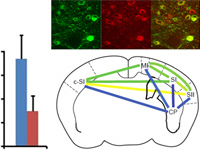Understanding how the brain generates complex functions like decisions and emotions, and how it can be repaired from a disease state, would benefit from tools for characterizing the fundamental components of the brain, and how they interact with one another. Towards the goal of mapping the structure and composition of the brain, expansion microscopy (ExM), a technology that physically swells preserved biological specimens through a chemical process, is opening up the possibility of scalably mapping the wiring and molecules of the brain. Towards the goal of controlling and observing the dynamical signals of the brain, genetically encoded tools such as optogenetic tools, fluorescent voltage indicators, and multiplexable signal reporters, are enabling brain circuit signaling dynamics to be perturbed and imaged with single-cell and millisecond timescale precision. Applying these toolsets in an integrated way may enable biologically accurate computer simulations of the brain to be constructed, starting with small organisms such as the worm C. elegans and the larval zebrafish, and potentially scaling to the human brain. Such simulations may be useful in exploring how specific brain components contribute to complex emergent functions, in discovering better therapeutic targets and strategies, and in generating new hypotheses regarding mysteries such as the nature of subjective experience.
